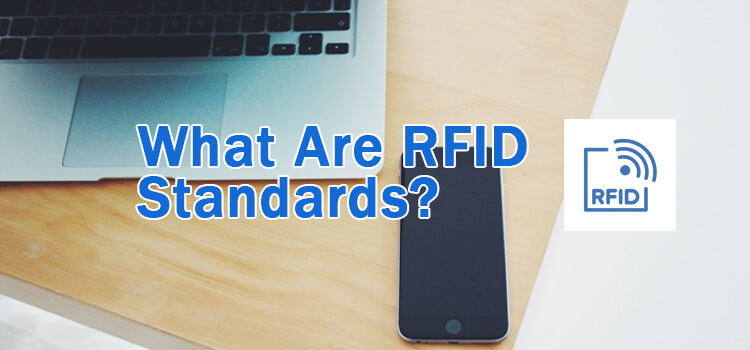RFID (Radio-Frequency Identification) tags are small, electronic devices that emit a radio signal to identify an object or person. They are used in supply chain management, access control, and inventory tracking but can have a variety of other applications as well.
RFID tags contain antennas that allow them to communicate with RFID readers. There are a variety of RFID standards, which is why it can be confusing for businesses trying to adopt the technology. This article will explain the most common RFID standards and how they differ.
What is RFID, and Why It is Important to Regulate Its Use
RFID tags use radio waves to transmit data. The technology is popular for identification, tracking, and access control.
As it spread through various industries, it became apparent that the compatibility of devices and tags or lack of it thereof would pose a challenge. As such, it became necessary to regulate its use.
The regulation is critical as it ensures compatibility. For example, it makes it possible for an RFID tag manufactured by company A to work optimally with an RFID reader manufactured by company B.
As such, you can have an RFID tag scanned by any compatible reader. The regulation led to the development of various standards that guide the manufacturing of all RFID-related devices.
Without regulations in place, malicious actors could potentially track products with RFID tags without consumers knowing.The most important thing is that the right people have access to this data.
What are RFID Standards?
RFID standards refer to the protocols and processes for using RFID tags to identify items. The most widely-used RFID standards are ISO/IEC 18000-2, ISO/IEC 14443, and ISO/IEC 15693.
These standards are designed to ensure that RFID tags function according to a common set of rules. As such, they have been implemented by the leading manufacturers of RFID products, which means that ISO/IEC 18000-2 compliant tags work interchangeably with ISO/IEC 14443 and ISO/IEC 15693 compliant tags.
This compatibility is critical for companies using RFID because it allows them to reuse the same tags regardless of which standard they use. For example, a product that uses an ISO/IEC 18000-2 compliant tag will work with an ISO/IEC 14443 or ISO/IEC 15693 compliant reader.
Who Sets RFID Standards?
Several international bodies set RFID standards. They include:
- International Organization for Standardization (ISO)
- International Electrotechnical Commission (IEC)
- Electronics Product Code Global Incorporated (EPCglobal)
Also, the ISO and IEC can come together to form the Joint Technical Committee (JTC 1).
All of these organizations have members that provide input into the standard-setting process. This means that different countries and industries are represented, ensuring that the result is accepted globally.
Some of the regional committees that regulate the operations of RFID technology include:
- Federal Communication Commission (FCC) for the United States
- European Telecommunications Standards Institute (ETSI) for Europe
- Ministry of Internal Affairs and Communications (MIC) for Japan
- Standardization Administration of China (SAC) for China
Other regions have also devised methods to regulate RFID use in their territories.
An In-Depth Analysis of All RFID Standards
Various regulation bodies have developed lots of RFID standards. This section covers some of the most common standards that you should know before adopting RFID technology for your business.
- ISO/IEC 18000 Series
These standards are designed to ensure compatibility among different RFID systems. They also regulate air interface 125 kHz to 2.5 GHz used by different types of RFID tags (both active and passive).
The first standard in this series is ISO/IEC 18000-1, which is followed by additional subparts that apply to certain applications. Some of the most common subparts are ISO/IEC 18000-2, ISO/IEC 18000-3, ISO/IEC 18000-4, and ISO/IEC 18000-7.
- ISO/IEC 14443 Type A and B
This standard is used for contactless smartcards. It ensures compatibility among different manufacturers so that cards issued by one company are compatible with readers from other companies. This has made it very popular among financial institutions, which issue smartcards to their customers.
The two versions of ISO/IEC 14443 are Type A and Type B.
Type A is compatible with NFC devices (including near field communication (NFC) enabled smartphones), while Type B is only compatible with older RFID readers. Some common applications for ISO/IEC 14443 include public transit payment systems, automated fare collection, and building entry systems.
- ISO/IEC 15693
This is an HF standard for contactless smartcards that uses the 13.56 MHz frequency to exchange data between cards and readers. It’s used in applications where Type A or B cards are too expensive to deploy.
ISO/IEC 15693 is a Type A tag, which means it can be read by all ISO/IEC 14443 Type A and B tags. However, the reverse isn’t true. An ISO/IEC 15693 reader cannot read Type A or B cards. Some applications for this standard are transportation ticketing, electronic toll collection, and access control.
- ISO 11784/11785 (134.2 kHz)
These standards regulate RFID tags that operate at 134.2 kHz. It sets the guidelines for encoding data in a tag’s memory, classifies different types of tags, and recommends how tags should be attached to an animal or object.
Some common applications for this standard include electronic article surveillance (EAS), library book management systems, and livestock tracking.
- EPG Gen 2 Standards
EPG Gen 2 is a second-generation standard developed by EPC Global. It is part of the EPC network, which links all RFID tags to a central database.
It sets guidelines for encoding data in an EPC tag’s memory and recommends how different types of tags should be attached to objects.
This standard is used for tracking high-value items in several industries, including retail, transportation and logistics, and healthcare.
Benefits of RFID Standards to Your Business
RFID standards are important because they make sure that all RFID tags and readers work in the same way. This allows you to switch between different manufacturers’ products without changing your infrastructure or making changes in your existing protocols.
It also guarantees compatibility with other suppliers, which means an investment in RFID will pay off in the long run because it ensures that your system will work with equipment from other companies. This makes standards a crucial part of any RFID project, so be sure to choose a supplier who has adopted common standards and research the different standards available before deciding on an RFID supplier.


